What is Machu Picchu?
Machu Picchu is a pre-Columbian Inca site located 2,430 metres (7,970 ft) above sea level. It is situated on a mountain ridge above the Urubamba Valley in Peru, which is 80 kilometres (50 mi) northwest of Cusco and through which the Urubamba River flows. Although there are numerous theories on the exact purpose of the site, most archaeologists believe that Machu Picchu was built as an estate for the Inca emperor Pachacuti (1438–1472). Often referred to as “The Lost City of the Incas”, it is the most familiar icon of the Inca World.
The Incas started building the estate around AD 1400 but it was abandoned as an official site for the Inca rulers a century later at the time of the Spanish conquest of the Inca Empire. Although known locally, it was unknown to the outside world before being brought to international attention in 1911 by the American historian Hiram Bingham. Since then, Machu Picchu has become an important tourist attraction.
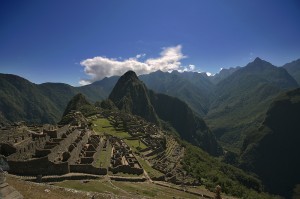
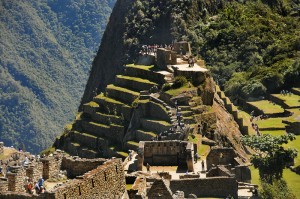
Machu Picchu was built around 1450, at the height of the Inca Empire. It was abandoned just over 100 years later, in 1572, as a belated result of the Spanish Conquest. It is likely that most of its inhabitants were wiped out by smallpox before the Spanish conquistadores arrived in the area, and it appears that they were aware of a place called Piccho although there is no record of the Spanish having visited the remote city. The Conquistadors defaced sacred rocks in other locations but they are untouched at Machu Picchu.
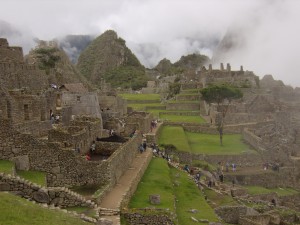
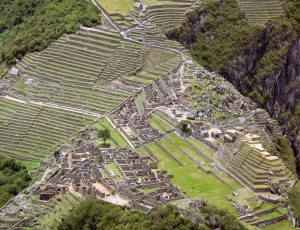
One of the earliest theories about the purpose of the citadel, by Hiram Bingham, is that it was the traditional birthplace of the Incan “Virgins of the Suns”. Research conducted by scholars, such as John Rowe and Richard Burger, has convinced most archaeologists that Machu Picchu was an estate of the Inca emperor, Pachacuti. In addition, Johan Reinhard presented evidence that the site was selected because of its position relative to sacred landscape features such as its mountains, which are purported to be in alignment with key astronomical events that would have been important to the Incas.
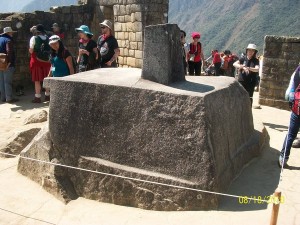
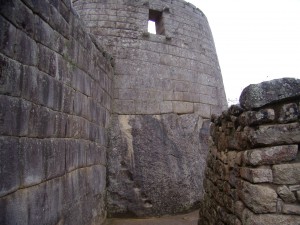
Although the citadel is located only about 80 kilometers (50 miles) from Cusco, the Inca capital, it was never found by the Spanish and consequently not plundered and destroyed, as was the case with many other Inca sites. Over the centuries, the surrounding jungle grew over much of the site, and few knew of its existence. On July 24, 1911, Machu Picchu was brought to the attention of scholars by Hiram Bingham, an American historian employed as a lecturer at Yale University. Bingham was led up to Machu Picchu by a local 11 year old Quechua boy named Pablito Alvarez. Bingham undertook archaeological studies and completed a survey of the area. Bingham coined the name “The Lost City of the Incas”, which was the title of his first book.
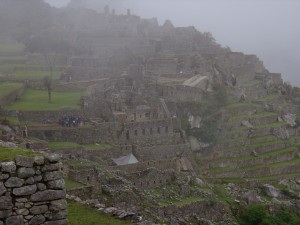
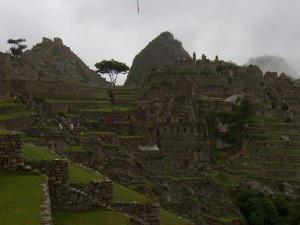
The stones, as in most handsome buildings throughout the Inca Empire, used no mortar. These stones were cut so precisely, and wedged so closely together, that a credit card cannot be inserted between them. Aside from the obvious aesthetic benefits of this building style, there are engineering advantages. Peru is a seismically unstable country and Machu Picchu itself was constructed atop two fault lines. When an earthquake occurs, the stones in an Inca building are said to “dance”; that is, they bounce through the tremors and then fall back into place. Without this building method, many of the best known buildings at Machu Picchu would have collapsed long ago. While the Inca are best remembered for their beautiful walls, their civil engineering projects were incredibly advanced as well. (Especially, as is often noted, for a culture that used no draft animals, iron tools, or wheels.) Machu Picchu had to be sculpted out of a notch between two small peaks by moving stone and earth to create a relatively flat space. The engineer Kenneth Wright has estimated that 60 percent of the construction done at Machu Picchu was underground. Much of that consists of deep building foundations and crushed rock used as drainage. (As anyone who’s visited in the wet season can tell you, Machu Picchu receives a lot of rain.). Machu Picchu is Peru’s most important and most visited tourist site, receiving around 1 million visitors annually and has been declared a UNESCO World Heritage Site.


Leave a Reply